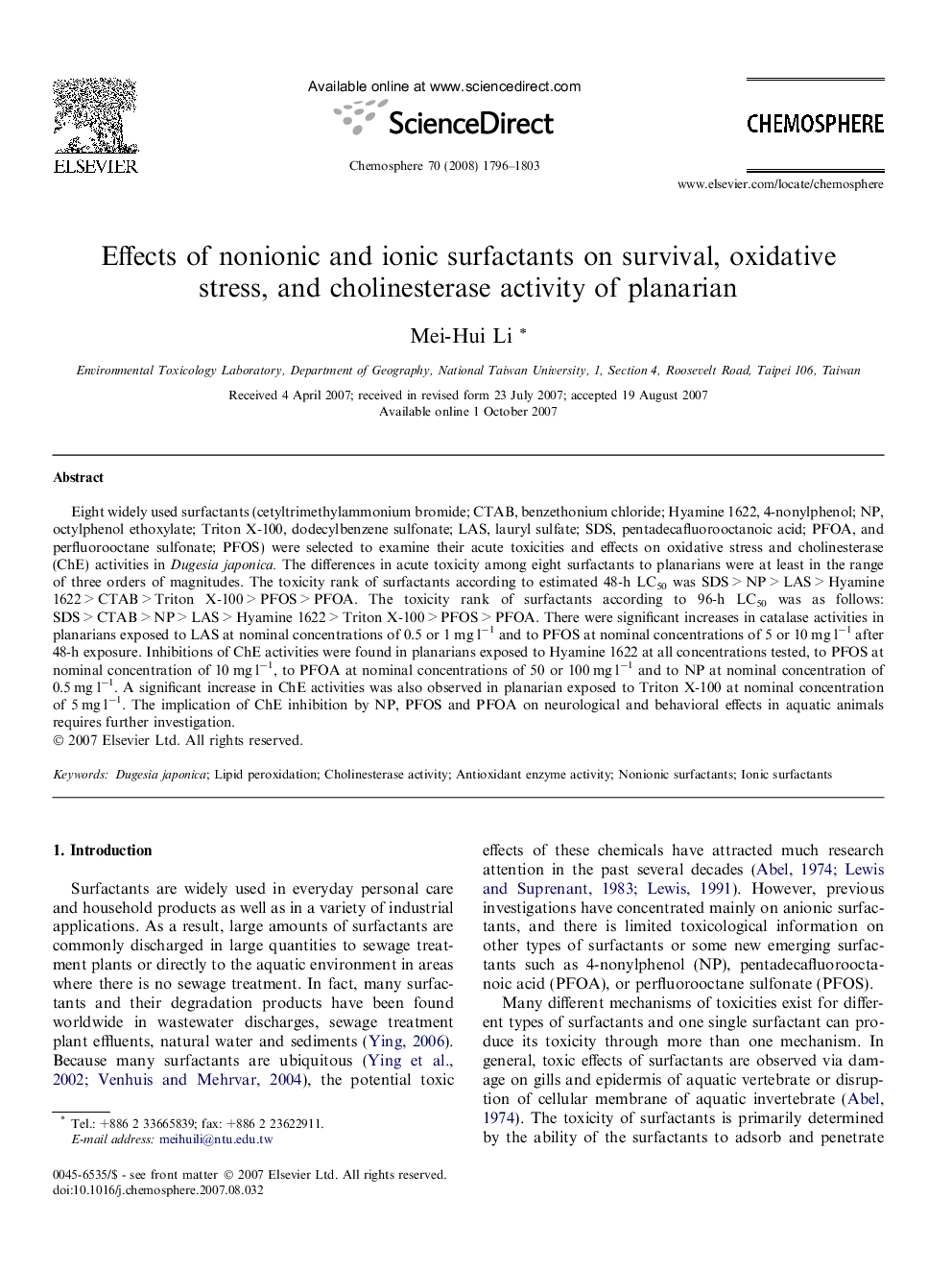| Article ID | Journal | Published Year | Pages | File Type |
|---|---|---|---|---|
| 4414596 | Chemosphere | 2008 | 8 Pages |
Eight widely used surfactants (cetyltrimethylammonium bromide; CTAB, benzethonium chloride; Hyamine 1622, 4-nonylphenol; NP, octylphenol ethoxylate; Triton X-100, dodecylbenzene sulfonate; LAS, lauryl sulfate; SDS, pentadecafluorooctanoic acid; PFOA, and perfluorooctane sulfonate; PFOS) were selected to examine their acute toxicities and effects on oxidative stress and cholinesterase (ChE) activities in Dugesia japonica. The differences in acute toxicity among eight surfactants to planarians were at least in the range of three orders of magnitudes. The toxicity rank of surfactants according to estimated 48-h LC50 was SDS > NP > LAS > Hyamine 1622 > CTAB > Triton X-100 > PFOS > PFOA. The toxicity rank of surfactants according to 96-h LC50 was as follows: SDS > CTAB > NP > LAS > Hyamine 1622 > Triton X-100 > PFOS > PFOA. There were significant increases in catalase activities in planarians exposed to LAS at nominal concentrations of 0.5 or 1 mg l−1 and to PFOS at nominal concentrations of 5 or 10 mg l−1 after 48-h exposure. Inhibitions of ChE activities were found in planarians exposed to Hyamine 1622 at all concentrations tested, to PFOS at nominal concentration of 10 mg l−1, to PFOA at nominal concentrations of 50 or 100 mg l−1 and to NP at nominal concentration of 0.5 mg l−1. A significant increase in ChE activities was also observed in planarian exposed to Triton X-100 at nominal concentration of 5 mg l−1. The implication of ChE inhibition by NP, PFOS and PFOA on neurological and behavioral effects in aquatic animals requires further investigation.
